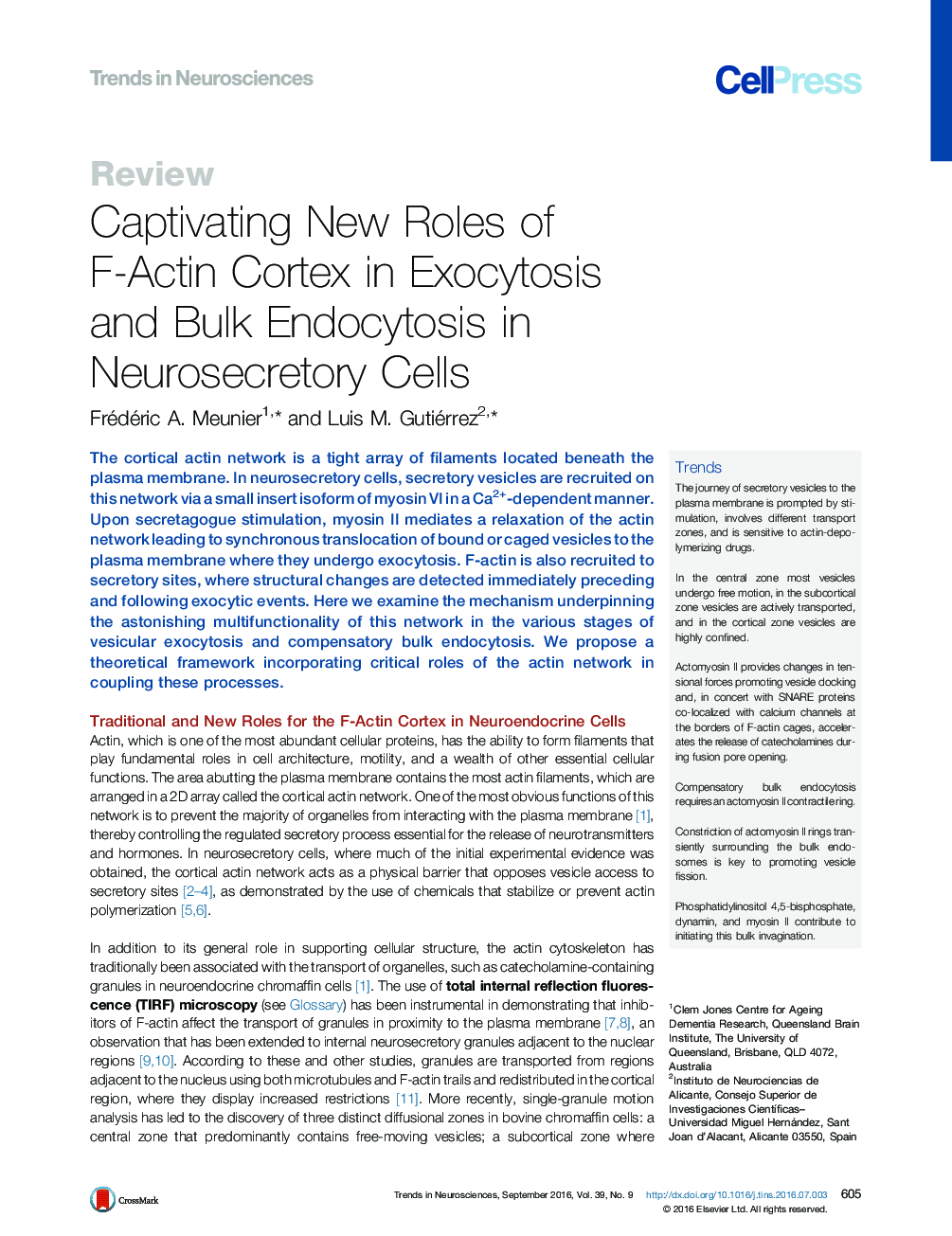| Article ID | Journal | Published Year | Pages | File Type |
|---|---|---|---|---|
| 4354089 | Trends in Neurosciences | 2016 | 9 Pages |
The cortical actin network is a tight array of filaments located beneath the plasma membrane. In neurosecretory cells, secretory vesicles are recruited on this network via a small insert isoform of myosin VI in a Ca2+-dependent manner. Upon secretagogue stimulation, myosin II mediates a relaxation of the actin network leading to synchronous translocation of bound or caged vesicles to the plasma membrane where they undergo exocytosis. F-actin is also recruited to secretory sites, where structural changes are detected immediately preceding and following exocytic events. Here we examine the mechanism underpinning the astonishing multifunctionality of this network in the various stages of vesicular exocytosis and compensatory bulk endocytosis. We propose a theoretical framework incorporating critical roles of the actin network in coupling these processes.
TrendsThe journey of secretory vesicles to the plasma membrane is prompted by stimulation, involves different transport zones, and is sensitive to actin-depolymerizing drugs.In the central zone most vesicles undergo free motion, in the subcortical zone vesicles are actively transported, and in the cortical zone vesicles are highly confined.Actomyosin II provides changes in tensional forces promoting vesicle docking and, in concert with SNARE proteins co-localized with calcium channels at the borders of F-actin cages, accelerates the release of catecholamines during fusion pore opening.Compensatory bulk endocytosis requires an actomyosin II contractile ring.Constriction of actomyosin II rings transiently surrounding the bulk endosomes is key to promoting vesicle fission.Phosphatidylinositol 4,5-bisphosphate, dynamin, and myosin II contribute to initiating this bulk invagination.
